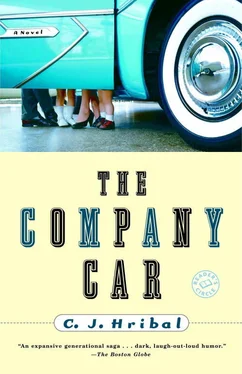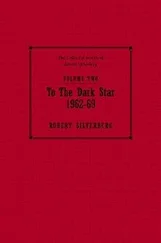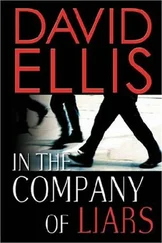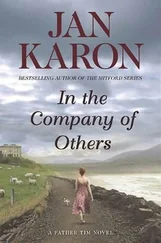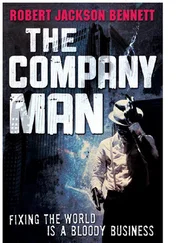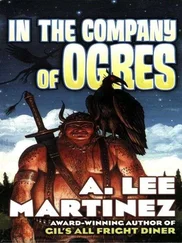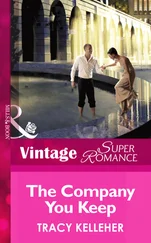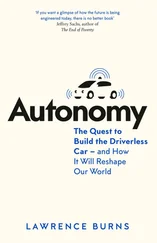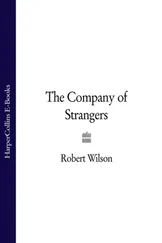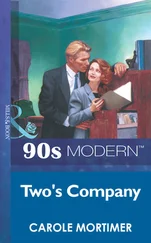But then Billy Ray King should have known better, too. In his desire to take his show national, he sold it to the network, giving up his role as producer so that he could concentrate on being the show’s star. The new producers brought in a pretty boy plucked from page 153 of the Sears Christmas catalog—Alan Pickett—and Billy’s days as host of the show were numbered. Television executives were already discovering that they didn’t want hosts who looked like they might drink too much at Aunt May’s funeral. It might have been different if Billy Ray King was funny. You could look like a regular schmo on television if you were funny. But Billy Ray King was dead earnest, breathing too hard, always looking as though he feared the bride might call the whole thing off right at the last minute and then where would he be?
They made a strange pair, Pickett and Oblansky, that fourth spring season of It’s Your Wedding . You could tell Billy Ray King was not comfortable with the arrangement. He kept trying to step in, excitedly and impatiently, while Alan Pickett was announcing how the game was played and what the couple could win that day and asking them where they were from and who their attendants were and what they had for future plans. “Kids! They’re going to have lots of kids, whocka whocka,” Billy Ray would say, nudging with his elbow whoever was closer, the bride or the groom. Brides tended to give Billy Ray a wide berth, positioning themselves whenever possible on the outside of their soon-to-be spouses. Pickett would nod assent and smile benignly, almost condescendingly, on Billy Ray’s latest faux pas and then go on with whatever it was he was supposed to say next, oblivious to Billy Ray’s futile and frantic antics to keep the show from being wrested from him. Alan Pickett was cool. He ended up hosting any number of short-lived game shows and in his later years was a regular on The Guiding Light, becoming famous as one of the few doctors on daytime television who didn’t try to get into anybody’s pants.
As television shows went, It’s Your Wedding was pretty dumb. How it worked was, first, a couple agreed to get married on television. Then they’d fill out forms, provide family photos, get dressed in their wedding finery, and come down to the studio with their attendants and families. There they’d answer questions from the host that were gleaned from the forms while stiff wedding photographs of their parents and grandparents were shown on-screen. This being Chicago in midcentury, people knew their ethnic origins and were proud of them. There were Poles and Slavs and Croats and Germans and Irish and Italians and Lithuanians and even some Cubans. Then came the family snapshots—the bride and groom as children, as teenagers, the requisite photos of the groom as a soldier, the bride’s high school graduation picture, maybe a picture of the two of them all dolled up for a fraternity dance or a night on the town. In between photos they cut back to the bride and groom looking nervous and a little silly as they answered Alan Pickett’s questions or fended off Billy Ray King’s clowning.
If you were to see such a show today, you’d be struck by how serious these couples seemed, but also how comfortable they were with each other. They knew each other’s families, came from the same neighborhoods, had grown up together. Contrast that with the next generation of game shows that used as fodder people’s willingness to celebrate their coupleness with an audience of several million strangers: The Dating Game, in which Jim Lange hooked up total strangers, and The Newlywed Game, in which couples showed the world how little they actually knew each other. Given what came later— Blind Date, ElimiDATE, Temptation Island (has there been a devolution in this country or what?)— It’s Your Wedding was quaint and almost sincere. Billy Ray King was right. What lay in the future for these couples? Infants, offspring, foundlings, nudniks, bambinos, rug rats, little buggers, brats, sucklings, newborns, blimps, radishes, dumplings, cabbages, lumpkins, tax deductions—children. In the later shows nooky was naughty and occurred without reference to progeny, but on It’s Your Wedding Billy Ray King believed it was all about results. “How many ya gonna have? Who do ya think they’ll look like more, you or you?” The grooms all smiled politely. The wives looked pensive. They knew the whole deal was going to rest pretty much on their slim shoulders. And bellies. And backs.
So that was the This Is Your Life portion of the show, only without the surprise guests. The next thing was the couple got married, sometimes with a bit of subterfuge. At that time no priest or minister would think of appearing on television for the purpose of marrying somebody in a television studio. And the logistics and expense of doing remote broadcasts every week would have been impossible given the technology at the time. This wasn’t, after all, the World Series. So the couples had two choices: Either they could really get married on the show by a justice of the peace, or they could get “married” by an actor sporting a collar and robes and after the show have the JP thing or a church wedding. “It makes no nevermind to me,” Billy Ray King would say, “but then, it’s not my family watching me get married on TV in front of a fusty old judge,” gently coercing them to get married by the Bing Crosby look-alike he’d hired to lend the proper air of beneficence to the occasion. After that the couple would kiss, shake hands with their attendants, and then either engage in a contest or perform some talent to receive their prizes. The talents displayed were usually the kinds of time-filling acts Ed Sullivan was fond of using in his shows: singing, dancing, plate spinning, playing the musical saw.
The prizes were arranged in groupings of various-size boxes. Monty Hall would later borrow this idea, only he used doors. You might find anything in the boxes you chose: a pot with two rubber chickens in it, a color TV, a hi-fi radio, new tires, a set of cookware, a vacuum cleaner, cash, or a check. Billy Ray King took great delight in sometimes putting the smallest things in the largest boxes. The box that looked sure to hold an upright freezer held instead an egg. There was enough good stuff that it was worth going on the show regardless, but unless you got extremely lucky with your choices, Billy Ray King the producer was rarely nicked for more than a cheapo set of golf clubs, a lamp, and maybe a pair of his and her Timex watches.
By the show’s fourth year on the air, Billy Ray King had the routine down cold, but when he got national syndication, he also lost control of the show. The national producers, in addition to bringing in Alan Pickett, wanted the show to move faster. Two weddings a show. Get rid of that hokey “my mama, she come from Albania” crap. Focus on the couple. Make it fun. More silly stuff. If you’re going to show pictures, embarrass them. Skip the talent showcase. Marry them at the top of the hour, side by side or sequentially, then pair them off in contests. Heck, why don’t we take them outside and have the brides and grooms and their attendants engage in a tug-of-war over a mud pit while still in their wedding regalia? Billy Ray King fought every change, but he had miscalculated his power and he was destined to lose the show the following season, when the fad for people getting married on TV had pretty much run its course. The show was canceled in February 1953, and Billy Ray King ended up selling appliances in downtown Chicago, Hoover and GE being kinder to him than the producers to whom he’d sold his show.
“How do you know all this, Dad?” Henry asks from the backseat. Henry is at the age when he wants to know how the world works. I’d explain it to him except I don’t know myself.
Читать дальше
